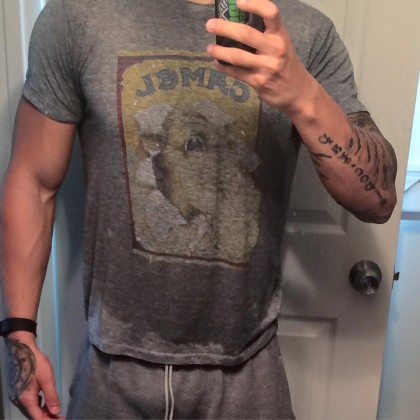Using A Heart Rate Monitor

I recently bought a POLAR FT7 HEART RATE MONITOR for around $100 and its taken my training to another level so I want to share it with you. Basically what this training tool does is gives you a constant read of your heart rate (in beats per minute – BPM) during training and also estimates calories burned within your workout. This constant feedback is an ultimate form of accountability to make sure you push the intensity and keep your workouts moving forward.

This also gives you a unique opportunity to find new ways of upping the ante by seeing what advanced techniques like supersets, drop sets, giants sets, and rest pause sets will do instead of just doing the typical straight sets.
I’ve started using lots of supersets and drop sets to keep the heart rate elevated as I tear down the muscle tissue simultaneously in my resistance workouts. This is a great way to get your “cardio/conditioning” in with your “strength”. Yes, you will have to use less heavy weight, which is arguably a good thing and although I know some may disagree with using this to train for hypertrophy and muscle size – I want to point out that you can still use heavy enough weights to create mechanical tension and muscle damage while creating metabolic stress from the prolonged sets, all in 1 workout. Muscle growth, or hypertrophy, is often said to be a combination of providing mechanical tension (load), metabolic stress (accumulation of lactic acid), and muscle damage (slow controlled repetitions with heavier loads). This type of workout contains all these components.
If you’re shooting to keep your heart rate above 60% of your max for the duration of your workout it most definitely feels like a WORKOUT! An accomplishment. A REAL challenge! The way a workout should be. Wearing this device makes sure you’re not in the gym yawning, texting and/or going through the motions just to check the box and get on with your day – it creates purpose and intention so you then go RUN your day. This is how we get results!
If you are interested in using this device I’m going to post whats called the “Karvonen Formula” below for you to workout your ideal training zones numbers. This will help you find your different heart rate percentages based off your maximal heart rate using your age and resting heart rate. I’ve been aiming to keep my heart rate from 180bpm(high end) to 140bpm (low end) for my workouts – which typically last 60-90 minutes. This burns anywhere from 700-1000 calories for my output which makes sure I stay focused each time I step foot in the gym to accomplish the goals I have.
Using this for your cardiovascular exercise is ideal as well. If you’re performing LISS (low intensity steady state) cardio maintaining your heart rate around 60% of your max will have you in an efficient fat oxidation zone, otherwise known as fat burning zone. While performing HIIT (high intensity interval training) reaching approximately 85% will have you in your anaerobic training zone and produce the EPOC (Exercise Post Oxygen Consumption) effect making your body continue to burn elevated amounts of calories once the workout ends.
All in all this is a great fitness tool to have in the tool box if you’re looking to make the most out of your workouts. I’ve definitely enjoyed it so far, just make sure to buy a few extra chest straps so you don’t become the stinky person in the gym.
To your success,
John Reed
KARVONEN FORMULA
MAXIMUM HEART RATE: 220-AGE (24)=196
RESTING HEART RATE: Take your pulse for 15 seconds immediately upon waking, before moving around too much and multiple that number by 4. (example: 56bpm)
HEART RATE RESERVE: 196-56=140(HRR)
60% MAXIMAL HEART RATE:
140x.6=84
86+56(RHR)=140bpm
60% of your max heart rate = 140 beats per minute.
85% MAXIMAL HEART RATE:
140x.85=119
119+56(RHR)=175bpm
85% of your maximal heart rate = 175 beats per minute.
*Use the same formula to calculate your desired intensities.
